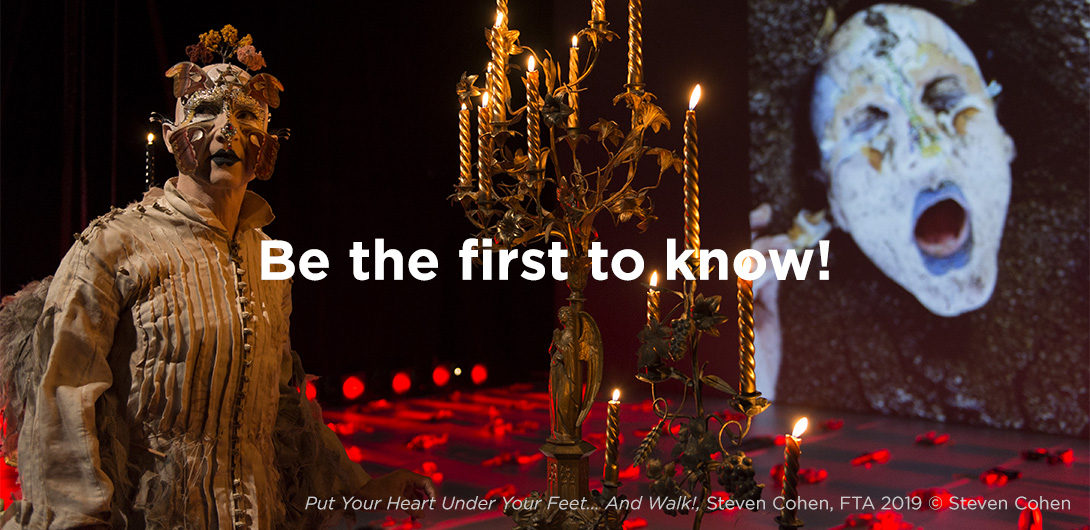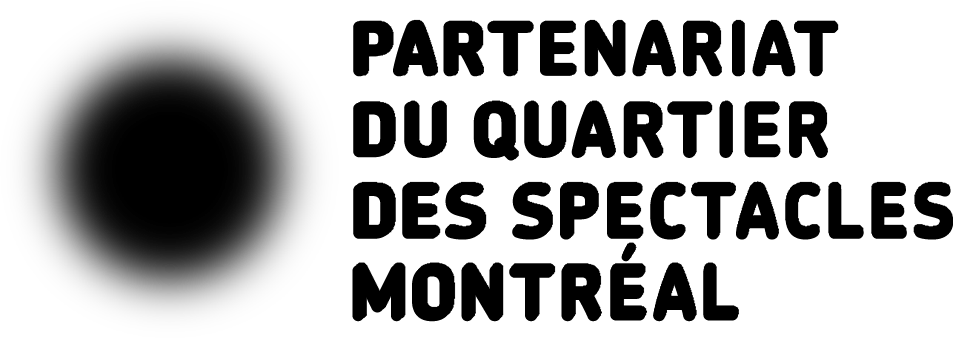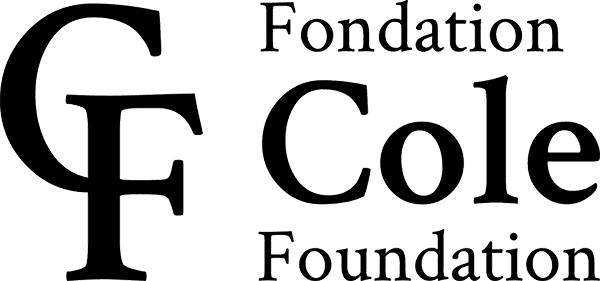ONDE DE CHOC
Long fascinated by the human body, a fantastic and multifaceted machine, the choreographer Ginette Laurin penetrates here into its innermost depths.
What can be heard deep within? Is it possible to render visible or audible the forces that move (in both senses of the word) the body? Seeking to flush emotion out from its deep recesses and its most primal forms of expression, she eavesdrops on its breathing, its murmurs, its heartbeats. They constitute the soundscape and the rhythms of an invisible, organic dance and music that resonate with the footsteps, physical contact and gentle touching of dancers on a “processed” wooden floor. The heartbeat of one propels the other. Martin Messier gives musical shape to that raw rhythm, and British composer Michael Nyman orchestrates counterpoints with lyrical overtones. Luminous oscillations vibrate against a backdrop, echoing the inner agitation of the dancing women and men. As eight performers move in and out of tune with each other, the gaze moves beyond the skin (vibrant with the blood coursing beneath it), beyond the breath expelled, and matter-movement emerges from the depths. Shock wave or dream catcher?
PRODUCED BY O VERTIGO
CHOREOGRAPHY: GINETTE LAURIN
PERFORMERS: MARIANNE GIGNAC-GIRARD + RÉMI LAURIN-OUELLETTE + CHI LONG + ROBERT MEILLEUR + JAMES PHILLIPS + GILLIAN SEAWARD-BOONE + AUDREY THIBODEAU + WEN-SHUAN YANG
LIGHTING DESIGN: MARTIN LABRECQUE
INSTRUMENTAL MUSIC: MICHAEL NYMAN
SOUND DESIGN AND ELECTROACOUSTIC COMPOSITION: MARTIN MESSIER
COSTUME DESIGN: MARC SENÉCAL
HAIR & MAKE-UP: ANGELO BARSETTI
REHEARSAL MISTRESS: ANNIE GAGNON
COPRODUCTION HELLERAU – EUROPEAN CENTER FOR THE ARTS (DRESDEN) + FESTIVAL TRANSAMÉRIQUES + FESTIVAL DE MARSEILLE + USINE C
PRESENTED IN ASSOCIATION WITH USINE C
REDACTION: MICHÈLE FEBVRE
TRADUCTION: NEIL KROETSCH

GINETTE LAURIN (MONTREAL)
O VERTIGO
Many works by Ginette Laurin, who established the O Vertigo company in 1984, have become classics, such as Chagall (1989), La chambre blanche, created in 1992 and reworked in 2008, La vie qui bat (1999) with the Société de musique contemporaine du Québec, and Luna (2001).
















